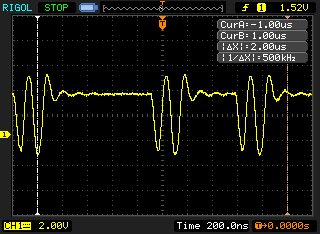Hello,
I've recently order a Kentec boosterpack, and I've extensively tried to make it work on the TM4C123 launchpad, but I'm convinced the order came with a faulty display. I've tried loading it using various drivers and projects that seem to work for other people. For example:
- Keil project seen on the .zip file "Kentec_4C123.zip" on Valvano's website
- njneers "freq-analyzer project" which i found on github
- Texas Instruments lab 10, found on the lab workbook. (To which I've used the sample codes)
My display is set up correctly, with the kentec label close to the two launchpad buttons. I've also tried removing it just a bit from the pins so the power and ground from the launchpad don't touch the connector strip.
After (succesfully) building, running and debugging all three of these codes, the kentec display does not show any sign of life whatsoever on all three of them, leading me to believe I have a malfunctioning device.
I'd like to know what test I can still try on the display to confirm it's not working.
Thanks, Paulo



